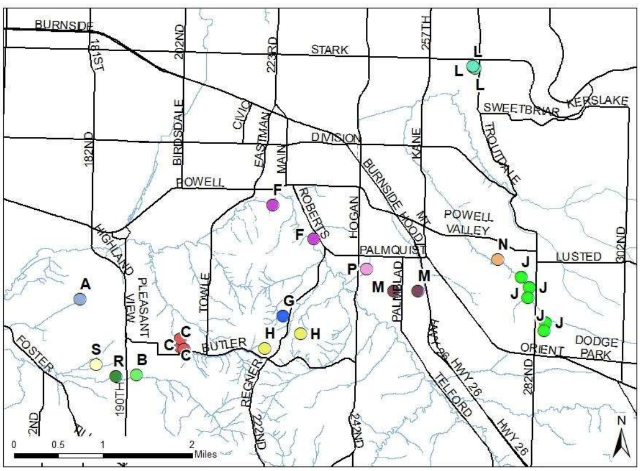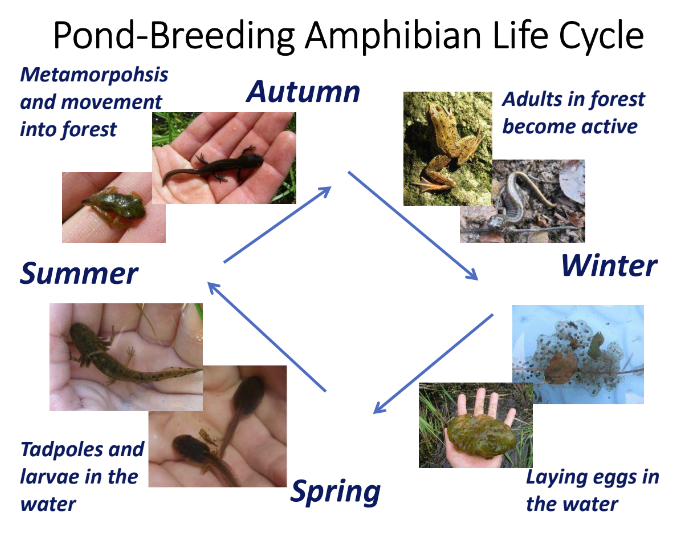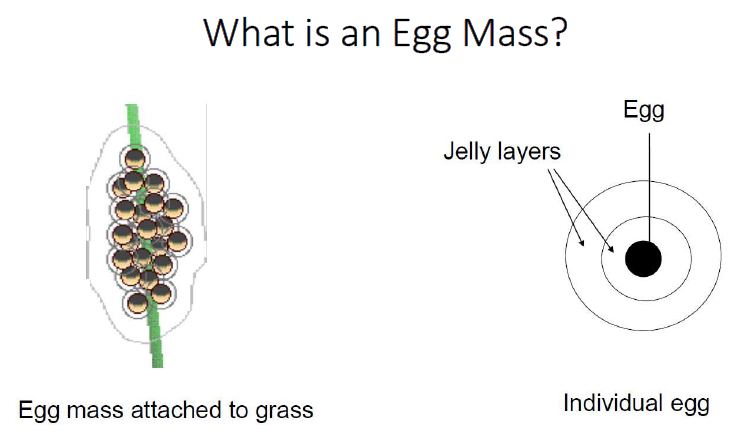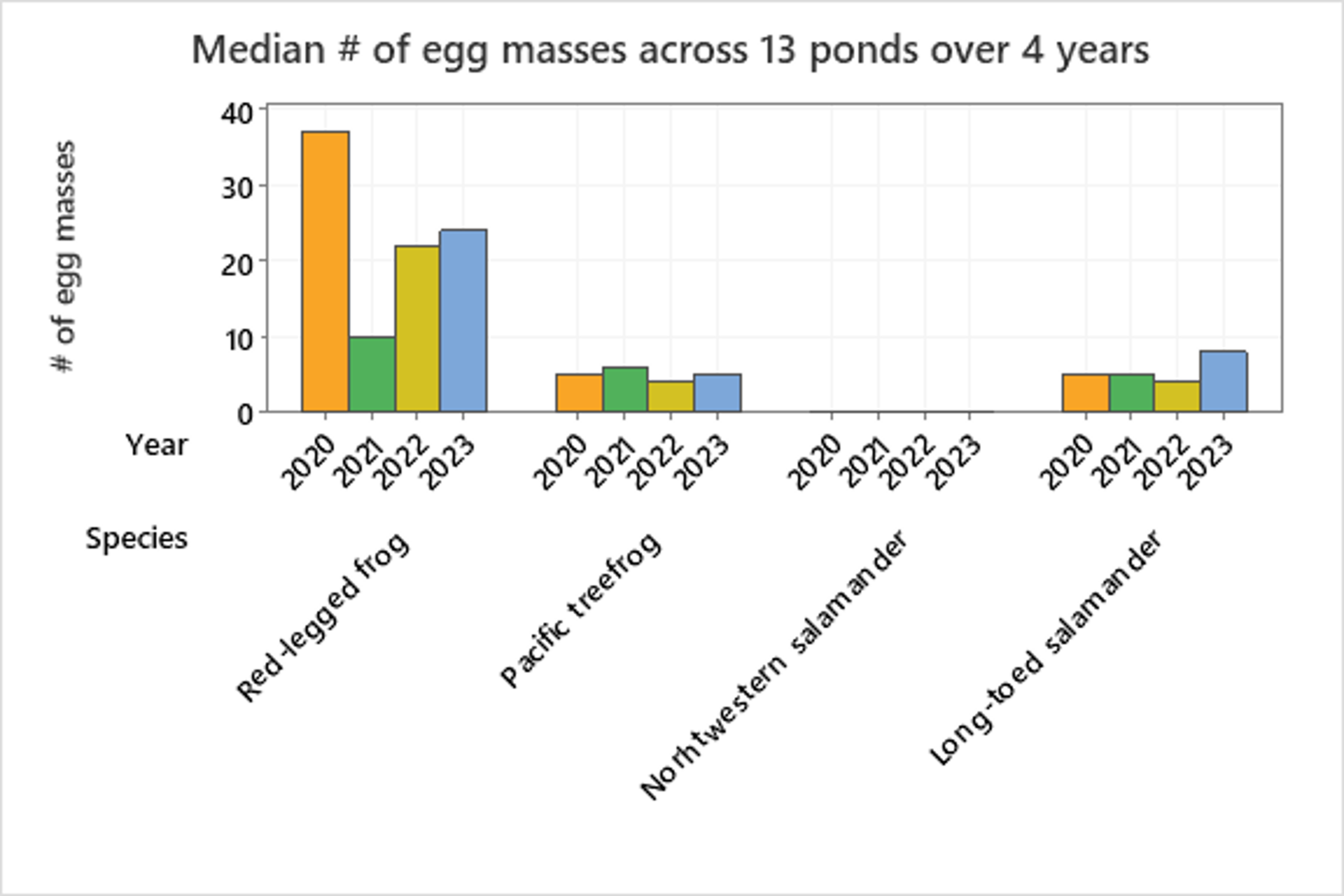Amphibian Science
Both aquatic and terrestrial
Amphibians are important indicators.
Newts, salamanders, frogs, and toads.
There are 32 amphibian species in Oregon – all are native to the state but one: the American bullfrog. The American bullfrog can compete with – and even prey on – native many native turtles, frogs, fish, and snakes!
Many of our native amphibians are classified as sensitive – either vulnerable or critical – so possessing them is not legal. But there is often a lack of even basic data for many species! Our work has actually identified areas in need of restoration and protection.
What we’ve discovered together –
We’re documenting the unknown!
946
Egg Masses in 2023
13
sites surveyed
1
species of concern
Amphibian Surveys

A variety of habitats is needed for the different species – there is no one-size-fits-all.
Life History
Although we usually associate amphibians with ponds, most amphibians spend at least part of their lives on land. In fact, many species winter on land, hiding under debris, like vegetation, leaf litter, and logs.
Amphibians can “breathe” through their skin (they also have lungs). To absorb oxygen through their skin though, their skin needs to be wet. So, they secrete mucous to keep their skin moist and use habitats where there is a lot of moisture.
Water is a general requirement for breeding and egg laying, although some salamander species are completely terrestrial – laying their eggs on land.

Species Diversity
Oregon’s amphibians are grouped into one of three categories based on their habitat requirements and life histories: amphibians inhabiting slow-moving waterbodies, amphibians inhabiting medium to fast-flowing streams, or terrestrial salamanders.
Salamanders are tailed amphibians with long bodies and short limbs. Some may be completely terrestrial, but they still prefer moist habitats. Oregon has 19 species of salamanders.
Frogs and toads tend to be short-bodied and squat. Frogs are more slender than toads and have smooth skin. Their eyes are higher on their heads than a toad’s eyes. Toads are wide-bodied and have dry, rough skin. Toad eyes are rounder and bulging.
Oregon has 12 native species of frogs and toads, many of whose population sizes are of concern. Worldwid, many frogs are endangered, a result of climate change, habitat loss, pollution and pesticides, infectious diseases, invasive species – and the pet trade.
Methodology
The goals of our amphibian egg mass surveys are to determine whether urban stormwater ponds are working as habitat or not and what we might do to change them.

Surveys are conducted in February and March. Our local amphibians prefer to breed on the edges of vegetation patches, so while some vegetation is necessary for amphibians to attach their egg masses to, too much vegetation can crowd amphibians out of ponds.
Sites and methodology were developed with help from Katie Holzer, Watershed Scientist, City of Gresham.
2022 Results


